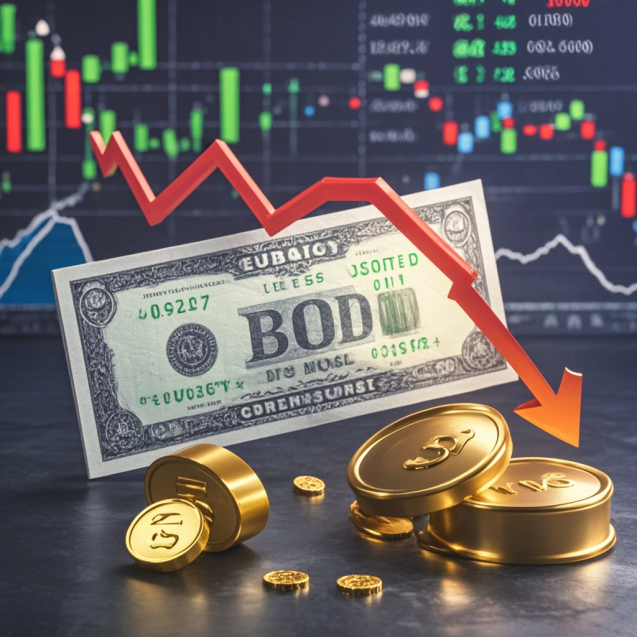Turmoil in the U.S. Bond Market: Long-Term Bonds Lead Declines, Driving Yield Curve Steepening
On Monday, the U.S. Treasury market experienced significant volatility, with bond prices falling alongside crude oil and gold. Long-term bonds led the decline, contributing to a notable steepening of the yield curve.
From a market performance perspective, U.S. Treasuries closed lower across the board, with long-term bonds suffering the most pronounced losses. Yields on long-term bonds rose by more than 6 basis points, driving a steepening trend in the yield curve. Notably, despite strong demand at the 20-year Treasury auction, this did little to stem the decline in long-term bond prices. After the auction, the steepening of the yield curve accelerated further, with spreads between 2-year and 10-year Treasuries, as well as between 5-year and 30-year Treasuries, widening.
A key factor behind these movements was the easing of market concerns over an escalation in the conflict between Israel and Iran. As geopolitical tensions subsided, investor risk appetite shifted. Funds that had previously flowed into the Treasury market as a safe haven began seeking higher-yielding assets. U.S. equities rallied as a result, while the bond market faced selling pressure, with prices falling alongside crude oil and gold.
For the U.S. bond market, the steepening of the yield curve driven by the underperformance of long-term bonds could have several implications. From a macroeconomic standpoint, a steeper yield curve is often interpreted as a signal of strengthening economic recovery expectations. Rising long-term bond yields suggest that markets are pricing in higher long-term growth and inflation expectations. Investors anticipate a gradual economic recovery, demanding higher yields on long-term bonds to compensate for potential inflation risks.
However, this scenario also introduces some uncertainty into financial markets. On one hand, a rapid rise in long-term yields could increase borrowing costs, potentially dampening the housing market and corporate investment. Mortgage rates are closely tied to long-term bond yields, and higher yields could raise homebuying costs, affecting housing demand. For businesses, elevated borrowing costs might delay or reduce capital expenditures, weighing on overall economic growth.
On the other hand, the steepening yield curve could fuel speculation about adjustments to the Federal Reserve's monetary policy. If markets expect a robust economic recovery, the Fed may tighten policy sooner than anticipated, raising expectations of interest rate hikes. This, in turn, could influence capital flows and price trends in the bond market, requiring investors to closely monitor the Fed’s future policy signals.
From a global financial market perspective, volatility in the U.S. bond market often has spillover effects. As one of the world’s most important safe-haven assets, movements in U.S. Treasury prices and yields can impact global capital allocation. Bond markets in other countries may adjust in tandem with U.S. Treasuries, and foreign exchange markets could also experience ripple effects.
Overall, Monday’s developments in the U.S. bond market reflect shifting market sentiment and economic expectations. Investors should remain vigilant to geopolitical developments, economic data, and Federal Reserve policy signals to better navigate future bond market trends.
